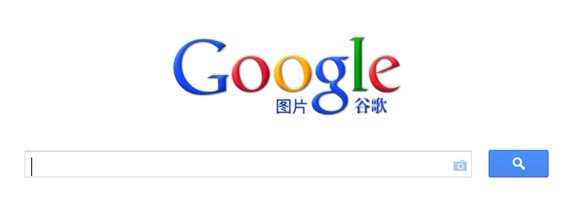转载自:http://blog.csdn.net/yjflinchong/article/details/7469213
java指纹识别+谷歌图片识别技术
前阵子在阮一峰的博客上看到了这篇《相似图片搜索原理》博客,就有一种冲动要将这些原理实现出来了。
写了图片识别的一个demo
提供源码下载,免费下载地址:http://download.csdn.net/detail/yjflinchong/4239243
去试试效果吧
要源码的,请留下邮箱。我尽量发到各位邮箱中。
本人三年JAVA开发,寻求牛人加入Q群53141769
Google "相似图片搜索":你可以用一张图片,搜索互联网上所有与它相似的图片。
打开Google图片搜索页面:

点击 使用上传一张angelababy原图:
使用上传一张angelababy原图:

点击搜索后,Google将会找出与之相似的图片,图片相似度越高就越排在前面。如:

这种技术的原理是什么?计算机怎么知道两张图片相似呢?
根据Neal Krawetz博士的解释,实现相似图片搜素的关键技术叫做"感知哈希算法"(Perceptualhash algorithm),它的作用是对每张图片生成一个"指纹"(fingerprint)字符串,然后比较不同图片的指纹。结果越接近,就说明图片越相似。
以下是一个最简单的Java实现:
预处理:读取图片
- BufferedImage source = ImageHelper.readPNGImage(filename);// 读取文件
第一步,缩小尺寸。
将图片缩小到8x8的尺寸,总共64个像素。这一步的作用是去除图片的细节,只保留结构、明暗等基本信息,摒弃不同尺寸、比例带来的图片差异。
- /**
- * 生成缩略图 <br/>
- * 保存:ImageIO.write(BufferedImage, imgType[jpg/png/...], File);
- *
- * @param source
- * 原图片
- * @param width
- * 缩略图宽
- * @param height
- * 缩略图高
- * @param b
- * 是否等比缩放
- * */
- public static BufferedImage thumb(BufferedImage source, int width,
- int height, boolean b) {
- // targetW,targetH分别表示目标长和宽
- int type = source.getType();
- BufferedImage target = null;
- double sx = (double) width / source.getWidth();
- double sy = (double) height / source.getHeight();
- if (b) {
- if (sx > sy) {
- sx = sy;
- width = (int) (sx * source.getWidth());
- } else {
- sy = sx;
- height = (int) (sy * source.getHeight());
- }
- }
- if (type == BufferedImage.TYPE_CUSTOM) { // handmade
- ColorModel cm = source.getColorModel();
- WritableRaster raster = cm.createCompatibleWritableRaster(width,
- height);
- boolean alphaPremultiplied = cm.isAlphaPremultiplied();
- target = new BufferedImage(cm, raster, alphaPremultiplied, null);
- } else
- target = new BufferedImage(width, height, type);
- Graphics2D g = target.createGraphics();
- // smoother than exlax:
- g.setRenderingHint(RenderingHints.KEY_RENDERING,
- RenderingHints.VALUE_RENDER_QUALITY);
- g.drawRenderedImage(source, AffineTransform.getScaleInstance(sx, sy));
- g.dispose();
- return target;
- }
第二步,简化色彩。
将缩小后的图片,转为64级灰度。也就是说,所有像素点总共只有64种颜色。
- // 第二步,简化色彩。
- // 将缩小后的图片,转为64级灰度。也就是说,所有像素点总共只有64种颜色。
- int[] pixels = new int[width * height];
- for (int i = 0; i < width; i++) {
- for (int j = 0; j < height; j++) {
- pixels[i * height + j] = ImageHelper.rgbToGray(thumb.getRGB(i, j));
- }
- }
第三步,计算平均值。
计算所有64个像素的灰度平均值。
- // 第三步,计算平均值。
- // 计算所有64个像素的灰度平均值。
- int avgPixel = ImageHelper.average(pixels);
第四步,比较像素的灰度。
将每个像素的灰度,与平均值进行比较。大于或等于平均值,记为1;小于平均值,记为0。
- // 第四步,比较像素的灰度。
- // 将每个像素的灰度,与平均值进行比较。大于或等于平均值,记为1;小于平均值,记为0。
- int[] comps = new int[width * height];
- for (int i = 0; i < comps.length; i++) {
- if (pixels[i] >= avgPixel) {
- comps[i] = 1;
- } else {
- comps[i] = 0;
- }
- }
第五步,计算哈希值。
将上一步的比较结果,组合在一起,就构成了一个64位的整数,这就是这张图片的指纹。组合的次序并不重要,只要保证所有图片都采用同样次序就行了。
- // 第五步,计算哈希值。
- // 将上一步的比较结果,组合在一起,就构成了一个64位的整数,这就是这张图片的指纹。组合的次序并不重要,只要保证所有图片都采用同样次序就行了。
- StringBuffer hashCode = new StringBuffer();
- for (int i = 0; i < comps.length; i+= 4) {
- int result = comps[i] * (int) Math.pow(2, 3) + comps[i + 1] * (int) Math.pow(2, 2) + comps[i + 2] * (int) Math.pow(2, 1) + comps[i + 2];
- hashCode.append(binaryToHex(result));
- }
得到指纹以后,就可以对比不同的图片,看看64位中有多少位是不一样的。在理论上,这等同于计算"汉明距离"(Hammingdistance)。如果不相同的数据位不超过5,就说明两张图片很相似;如果大于10,就说明这是两张不同的图片。
- for (int i = 0; i < hashCodes.size(); i++)
- {
- int difference = hammingDistance(sourceHashCode, hashCodes.get(i));
- System.out.print("汉明距离:"+difference+" ");
- if(difference==0){
- System.out.println("source.jpg图片跟example"+(i+1)+".jpg一样");
- }else if(difference<=5){
- System.out.println("source.jpg图片跟example"+(i+1)+".jpg非常相似");
- }else if(difference<=10){
- System.out.println("source.jpg图片跟example"+(i+1)+".jpg有点相似");
- }else if(difference>10){
- System.out.println("source.jpg图片跟example"+(i+1)+".jpg完全不一样");
- }
- }
你可以将几张图片放在一起,也计算出他们的汉明距离对比,就可以看看两张图片是否相似。
这种算法的优点是简单快速,不受图片大小缩放的影响,缺点是图片的内容不能变更。如果在图片上加几个文字,它就认不出来了。所以,它的最佳用途是根据缩略图,找出原图。
实际应用中,往往采用更强大的pHash算法和SIFT算法,它们能够识别图片的变形。只要变形程度不超过25%,它们就能匹配原图。这些算法虽然更复杂,但是原理与上面的简便算法是一样的,就是先将图片转化成Hash字符串,然后再进行比较。
以上内容大部分直接从阮一峰的网站上复制过来,想看原著的童鞋可以去在最上面的链接点击进去看。
























 4846
4846

 被折叠的 条评论
为什么被折叠?
被折叠的 条评论
为什么被折叠?








